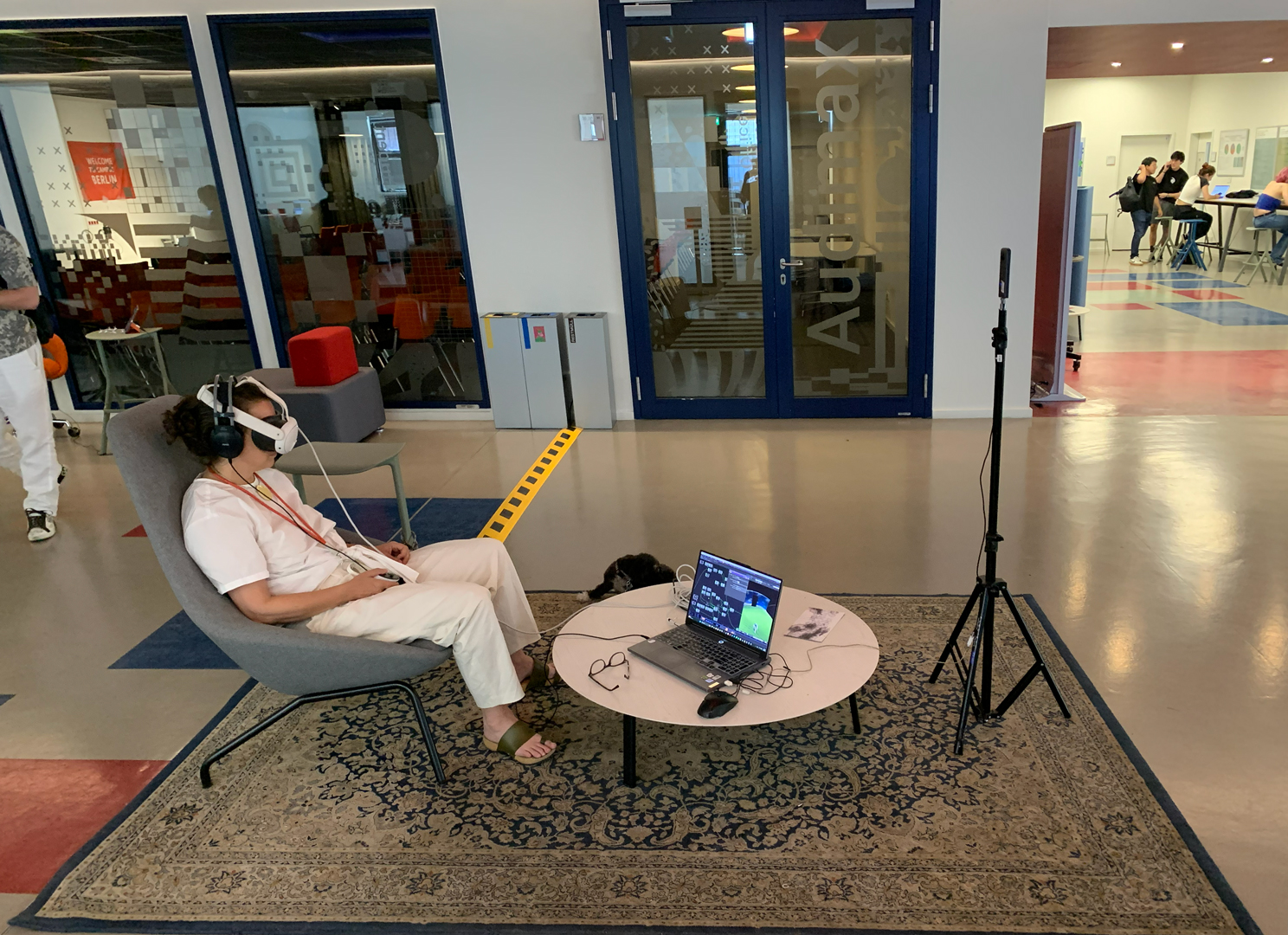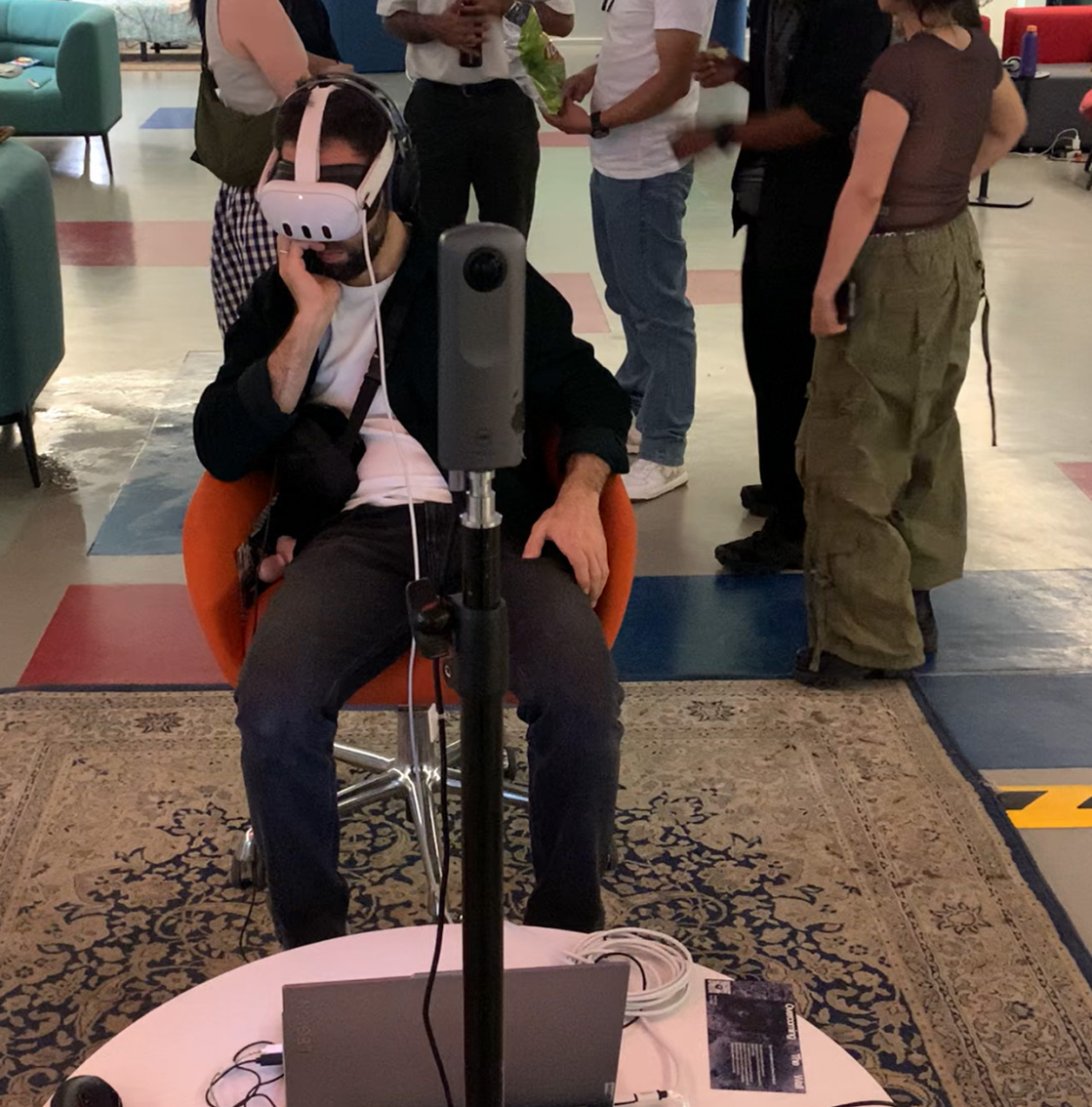company
type
role
team
-
Ai | New Media
Designer | Researcher
-
2025
Intro
Everything is Already an Image is an AI-driven, immersive VR journey through the collective subconscious of the digital age — a surreal exploration of memory, technology, and the blurred boundaries between human and machine imagination.
The project uses artificial intelligence as both a tool and a collaborator, generating dreamlike environments assembled from fragments of our shared digital memory: the Windows XP hill, the red balloon at the optometrist, flickering boot screens, forgotten error messages. Each image is reconstructed and reinterpreted by neural networks trained on the visual debris of the early internet, transforming nostalgia into something uncanny and new.
As viewers move through the experience, AI models continuously reinterpret their surroundings, blending their presence into the evolving virtual landscape. The line between observer and image dissolves — the system sees, remembers, and reimagines them in real time.
In the final sequence, the world turns back toward the viewer. A 360° camera and AI-driven generative processes reveal their own likeness absorbed into the digital environment — an echo of self filtered through the machine’s memory.
Everything is Already an Image is both meditation and mirror: a reflection on how artificial intelligence reshapes not only the images we see, but the way we remember, dream, and define ourselves in the age of synthetic perception.
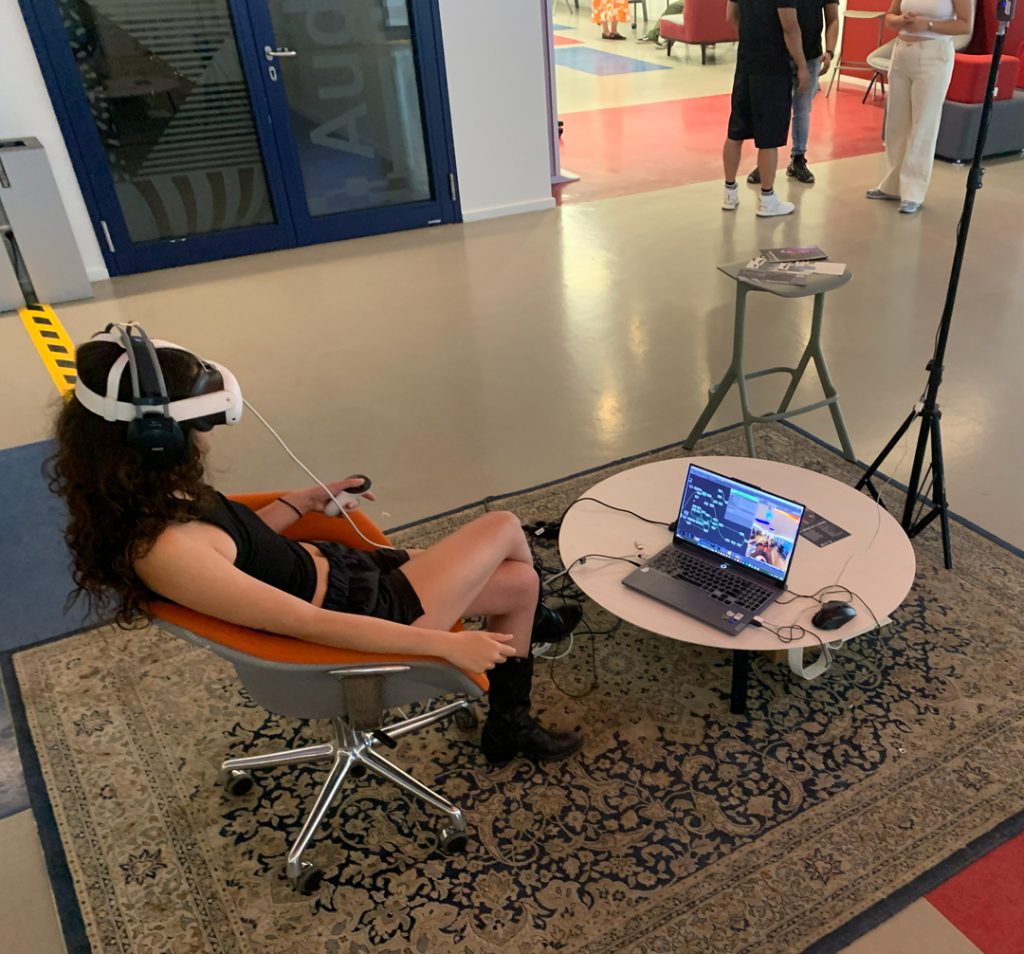
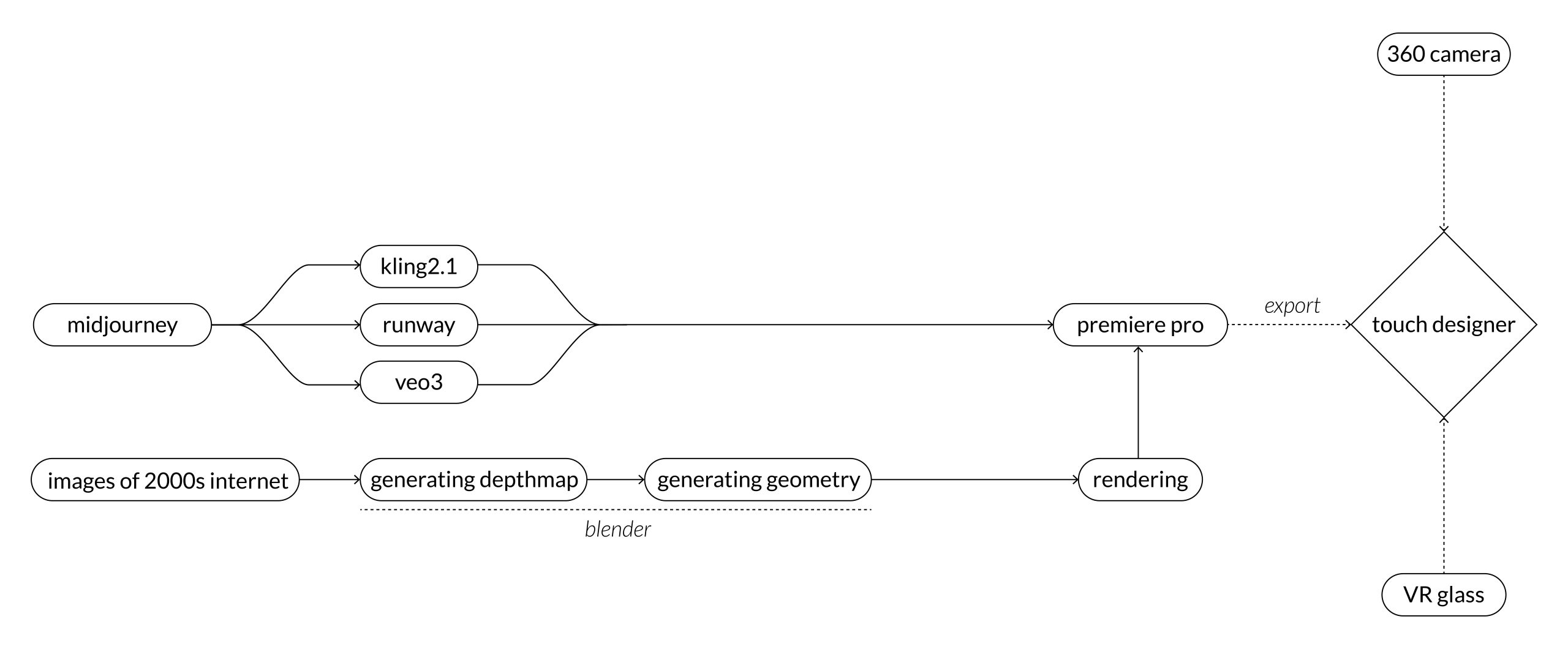
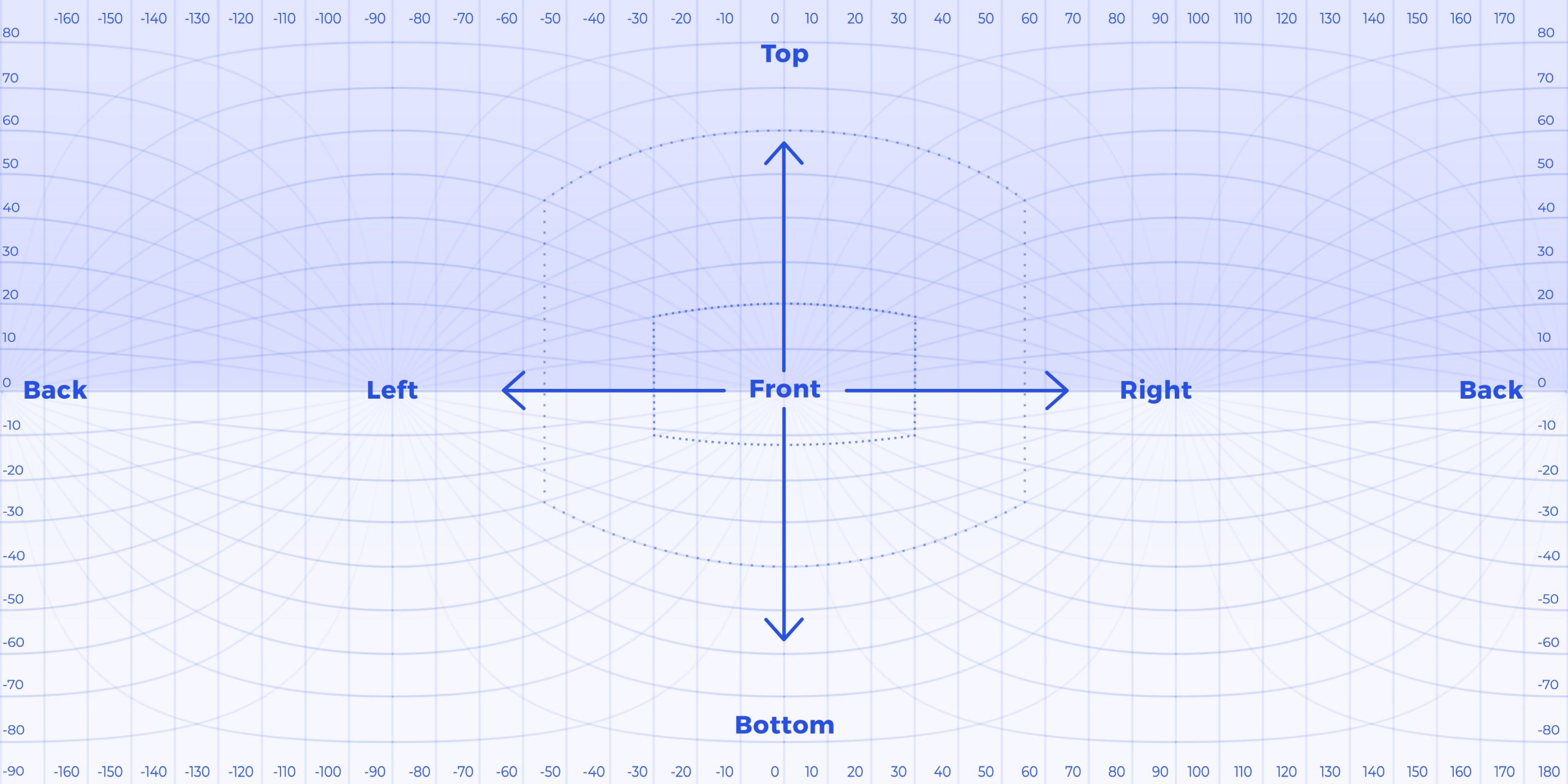
equirectangular imaging by Ai
The project’s visual foundation emerges from Midjourney-generated images, which I specifically created in equrectangular format to suit VR presentation. These AI-generated scenes reinterpret fragments of collective digital memory — desktop wallpapers, system icons, and forgotten interface textures — into new dreamlike terrains. This synthesis of algorithmic vision and human curation forms the aesthetic backbone of the experience: a space where AI nostalgia becomes architecture.
Motion and transformation are introduced through tools such as Kling, VO3, and Runway, which generate subtle distortions, looping flickers, and shifting temporal rhythms. These elements emulate the fluid, unstable nature of memory, evoking recollection as something alive and constantly rewritten rather than fixed or literal.
Giving Space to Flat Images
In some scenes of the project Everything is Already an Image, artificial intelligence was used to generate depth maps from static images — including photographs, textures, and fragments that never originally existed in three-dimensional space. What was once flat and fixed is computationally reimagined to suggest volume, distance, and dimensionality.
This process becomes a kind of digital resurrection, giving depth to shallow surfaces and transforming them into traversable landscapes. By using AI to extract the illusion of space, the project explores how images — particularly those drawn from our digital past — can shift from something we merely observe into environments we can inhabit and move through.
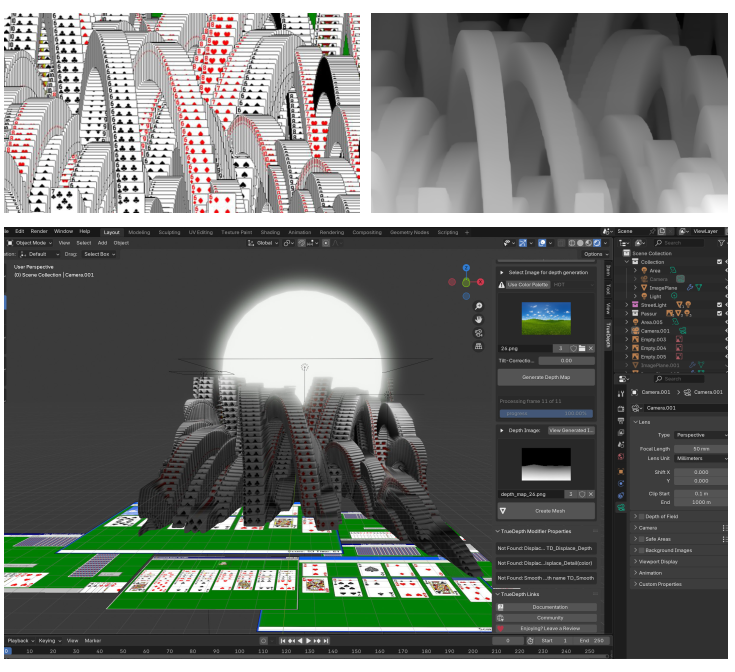
Technical Setup
The installation is structured around a three-part system: a 360° camera, a PC running TouchDesigner, and a VR headset, working together to create an immersive, reflexive environment.
The main VR experience is composed of pre-rendered 360° scenes presented through an HMD (head-mounted display). These scenes are spatially constructed using equirectangular imagery, animated through AI-assisted tools and real-time compositing in TouchDesigner.
This final moment functions as a conceptual pivot—collapsing the boundary between observer and observed. The viewer, who has been moving through memories, simulations, and fragments of visual culture, now becomes part of the image itself

Reflections on Exhibition
Presenting the prototype of Everything is Already an Image revealed a compelling range of audience responses, offering valuable insights into the work’s affective and narrative impact.
Viewers were especially drawn to the distinct aesthetic language—a blend of dreamlike, distorted imagery and surreal pacing that evoked a haunting familiarity. The voice of the child narrator resonated strongly, often described as both intimate and unsettling. Many noted that the voice introduced a layer of emotional tension, amplifying the sense of eerie nostalgia that permeates the experience.
The most striking and consistent reaction, however, came during the final scene. As the VR environment transitions to a live 360° feed and the viewer sees themselves within the virtual space, the boundary between narrative and reality collapses. This moment—when the viewer becomes part of the story, no longer just observing but being observed—was often met with surprise, delight, and reflection. Participants frequently described this ending as the emotional and conceptual core of the work. It transformed the experience from something watched into something inhabited. This gesture of folding the spectator into the image was not only unexpected, but deeply personal—raising questions about memory, presence, and the self in mediated space. The prototype stage affirmed the importance of reflexivity in immersive storytelling and the power of subtle narrative devices to shape audience perception in profound and lasting ways.
